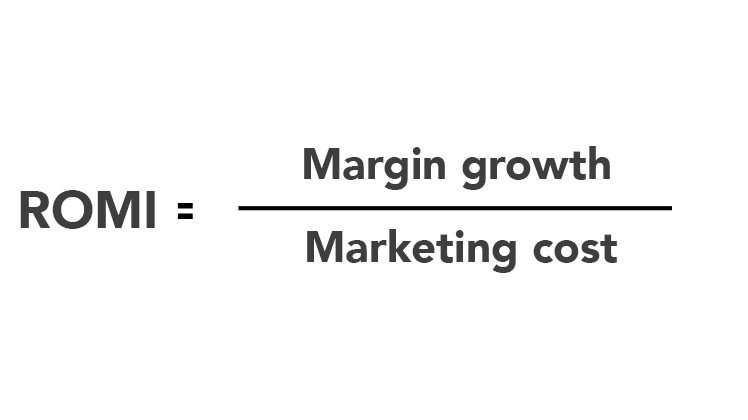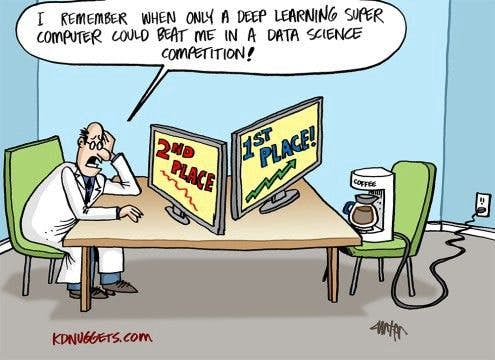Blog
What is ROMI and where to start
September 21, 2021 | Tuomas Matilainen

What is ROMI?
In the good old days, half of your marketing money were wasted without full certainty of which half is which. Nowadays we can get much closer to the truth – what is the exact ROMI – but what does this acronym mean in practice and why is it so important for results-driven marketers?
Modernization has paved the way for professional insights that continuously innovate our conventional means toward success.
As there are many key performance indicators (KPIs) that measure and line up a company’s expenditures for quality assurance, one metric has virtually always been quite nebulous – return on marketing investment.
What is Marketing ROI?
Marketing ROI or return-on-marketing-investment (ROMI) is a sub-metric of ROI that measures the efficiency of a marketing campaign for the purpose of assisting better decision-making for future investments.
It has mainly comprised of online marketing as globalization has made communication more instantaneous through online marketing and because of web analytics, companies have been able to accurately formulate their ROMI (or ROAS) and measure the effectiveness of their online marketing campaign[s]. Or at least they think they can (see e.g. this article ).

You can see a simple representation of ROMI’s when you take the incremental value that attributes to a certain marketing activity and subtracts the marketing costs for the activity itself. Taking that total and dividing it by the same marketing costs you get your ROMI.
You might ask yourself “What’s a good ROMI then?”. This is an almost similar question as “what is a good EBIT percentage?”. And the answer is: it depends. It depends on the KPI you’re modeling; it depends on your target audience; it depends on your industry and business; it depends on your marketing budget and goals. It’s important to choose the incremental value of a metric you can affect most directly through investments within the scope. Often this metric is sales, traffic, or profit. Profit is, though, quite often beyond marketing department’s scope. However, as a rule of thumb, we can say that it’s better to gain more than you lose, meaning that margin ROI should be above 1. Anything below that is straight up burning cash.
Why is ROMI important?
Why do we need it? Like age, isn’t ROMI just a number that doesn’t define me as a marketer?

It’s true that marketing is all about being bold and trying new ideas, which is really hard if you’re constantly staring the rear-view mirror. But like other areas of business, marketing department has also profit/loss responsibility. If you cannot prove the value of your work with “hard data”, you cannot expect to get the respect, trust and marketing budget you deserve. Which is why ROMI is really, really important, especially for you.
A fundamental goal is to learn how much of incremental sales, profit or traffic your marketing investments (yep, they should be considered investments, not spends) generate. Like every investment, marketing investments, too, should have return on investment figures determined. This is the most efficient way to start number-driven dialogue within management group, including CFO. Figures and insights without actions are not enough, though. At the end of the day, the objective is to make better decisions by increasing optimization by continuously providing value and exponentially driving productivity upward.
Marketing is the benchmark of sustainable action that molds uniqueness and intent in a direction of success. Marketing should be thought of as an extension of oneself, and what better way to ensure success but, to have access to check-ups on a regular basis?
Without certain KPIs to set companies in check, money may be invested in the wrong campaigns, departments might wither, investments may not be prioritized properly for maximum efficiency, and competitors may use your weakness as their advantage.
Leaders who understand this and are accountable for these measurements hope to move investments in the right direction and make decision-making easier.
How is ROMI calculated?
The most difficult part in defining ROMI is the calculation of “Return”, i.e. the incremental sales or margin of your marketing investments. There are so many things that affect the metric you’re interested in. One needs to have a wide set of different data. Then you need to estimate these points’ effect on sales. Human brain is seldom able to do this complicated calculation, but luckily advanced analytics and machine learning help us.

There was once a time when online and offline ROMI required different amounts of attention because offline conversion data was more coarse-grained in terms of accurate proceedings.
This evidently led to stakeholders investing more in online marketing because KPIs were able to present viewable results; however, it did not always lead towards the correct results. It would lead to wasteful advertisements and campaigns that would fail, but investments would not stop coming in. It would give more buying power toward agencies that have credible proof of successful campaigns. But, as we are living in a new technological era, our problems of the past have found semantic solutions.
Using simple in-house analytics like Google Analytics or Microsoft Excel mainly consist of one or two employees within your company that might meet your performance measurements but will require more time spending and will lack competitive edge.
Slightly more advanced, but still project-based analytics will continue to cost more as your outsourced analytics companies may have higher buying power and you just may invest in whatever your agent declares is best.
Highly advanced analytics with omnichannel view performance enhancements and enterprise-based market solutions are slowly beginning to scale the competition as these companies start utilizing artificial intelligence (AI) to calculate a more precise marketing insights from online and offline data. Finding these AI-based marketing analyticscompanies will be as rewarding as finding a diamond in the rough. But the good news is: they exist.
Where to start and what to do?
Beginning with evaluating your KPIs and asking yourself: “is there room for optimisation” already gives you a head start as most do not search for profitability from within their company, but from outside sales. Start by rehearsing your business and marketing goals and ask yourself: “Have I met these goals”; “How have the key metrics developed during the last years?”; “What have I done to meet these goals?”.
Then have a deep dive into the data that could explain the performance of reaching your business and marketing goals. The most straight-forward, but quite often not the lightest one, is to collect all your ad spend data from previous years and put in a nice time-series graph together with your marketing goal metric data, e.g. sales, margin, or brand awareness. Try to find some correlation (and even causality) between the actions you’ve taken and the results the company’s reached. Be sure to include as comprehensive data sets as possible although a proper marketing data inventory means quite often contacting and briefing several internal and external stakeholders. Collecting the data might take some time but it’s worth it. It’s actually essential for reliable ROMI results.
Advanced analytics is almost always needed to determine hundreds or thousands of activities’ contribution to your most important marketing metrics. To make things a bit more complicated, these activities tend to overlap with each other. As mentioned earlier, there are luckily AI-based marketing analytics companies which can help you.
Before you get started, try to involve as many stakeholders as possible since ROMI is not only for marketing but for the whole company. Besides, you’ll need data from different sources and from different people. Knowing the possible opportunities and limitations is crucial before getting started.
Want to know how much money you can earn?
Taking the first steps forward will lead you on a trajectory toward sureness that your company is doing well and no investments are being ill-managed, nor will your decision allow sales numbers to be hidden and buried in disorder.
The most up-to-date software on the market solves problems you never thought you had. This AI-powered software employs machine learning from all online data and offline data down to the last receipt, revealing how much ROMI is being earned and by what channel while simultaneously exposing forecast sales actual sales in real-time.
Continuous growth and maximum service should be top priority that every company strives for, whether you are a customer or buyer because of reputable power to push your company forthright into a leading market.
Curious to learn more? Book a demo.
Related articles
Read more postsNo items found!